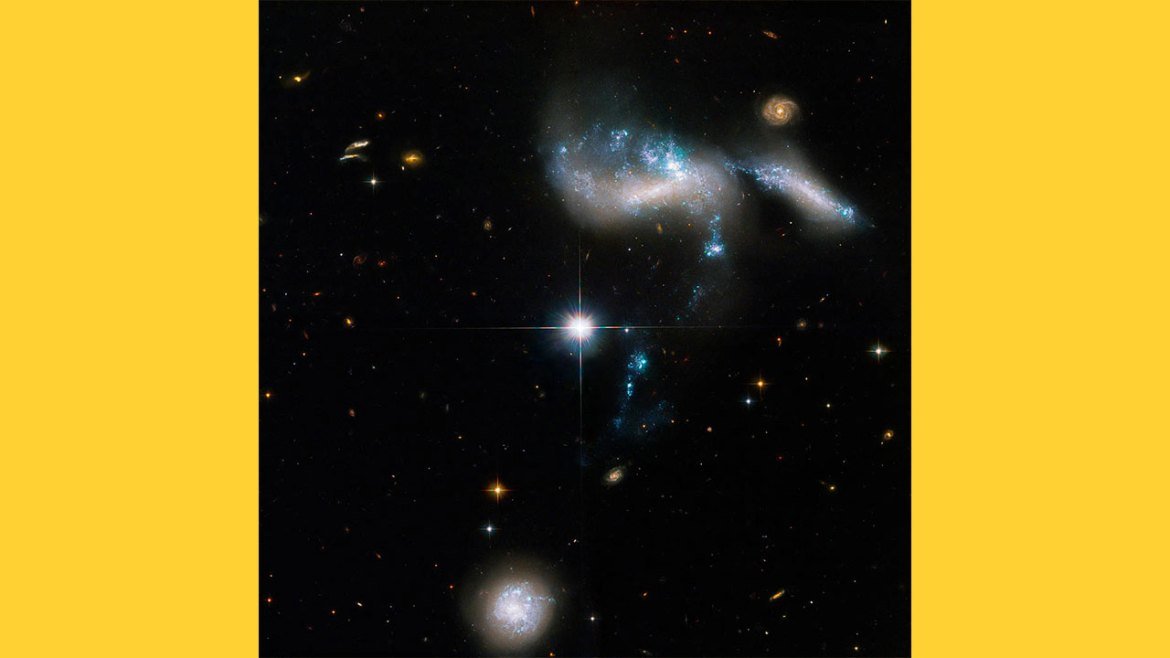An image taken by the Hubble Space Telescope shows an unusual interaction of four dwarf galaxies. It revealed four very close dwarf galaxies shared by NASA. The four galaxies together are called Hickson Compact Group 31 or HCG 31. The four interacting dwarf galaxies lie 166 million light-years from Earth.
Four dwarf galaxies very close together!
Two small galaxies appear as one object at the top of the shared image. These two galaxies are named NGC 1741. Just to the right is a cigar-shaped galaxy, and to the lower left is a fourth galaxy connected to the other three by a star cluster.
Galaxies that are very close to each other are only 75 thousand light years apart. In other words, it is possible to fit these four galaxies into the Milky Way galaxy. Dwarf galaxy mergers are typically quite distant and very old, but this group is relatively young. Astronomers use data from Hubble to rewind the positions of galaxies, see when they begin to interact, and predict when they will eventually merge.

Actually, this image was taken in 2010. However, this visual, which has been revised and detailed until today, shares more details about galaxies with us. As gravitational forces from the mass of galaxies interact, it encourages the formation of stars that glow blue when young.
The lead author of the study, Sarah Gallagher, said in a statement when the image was released:
This is a clear example of a galaxy group on its way to merging because it will unite everything. there is too much gas.
Galaxies are relatively small, comparable in size to the Large Magellanic Cloud, a satellite galaxy of our Milky Way. Their speeds, measured from previous studies, show that they are moving rather slowly relative to each other, 60 kilometers per second. Therefore, it is not difficult to imagine that this system will turn into a single elliptical galaxy in a billion years.
So what do you think about the merging of galaxies? You can share your views with us in the comments section.